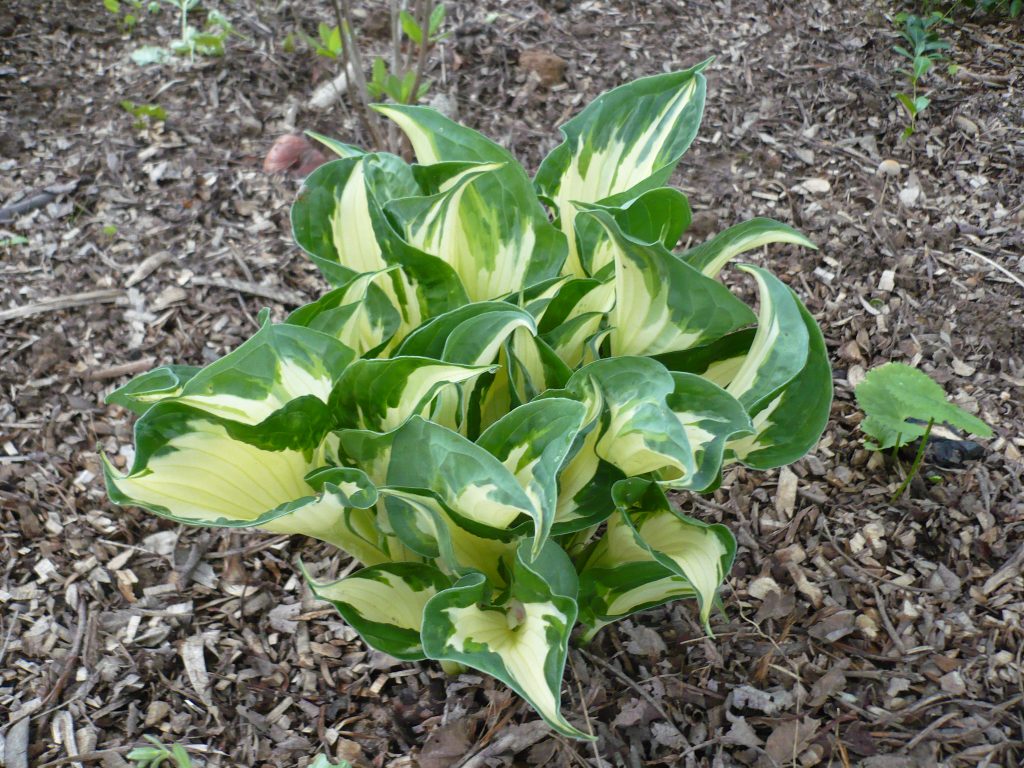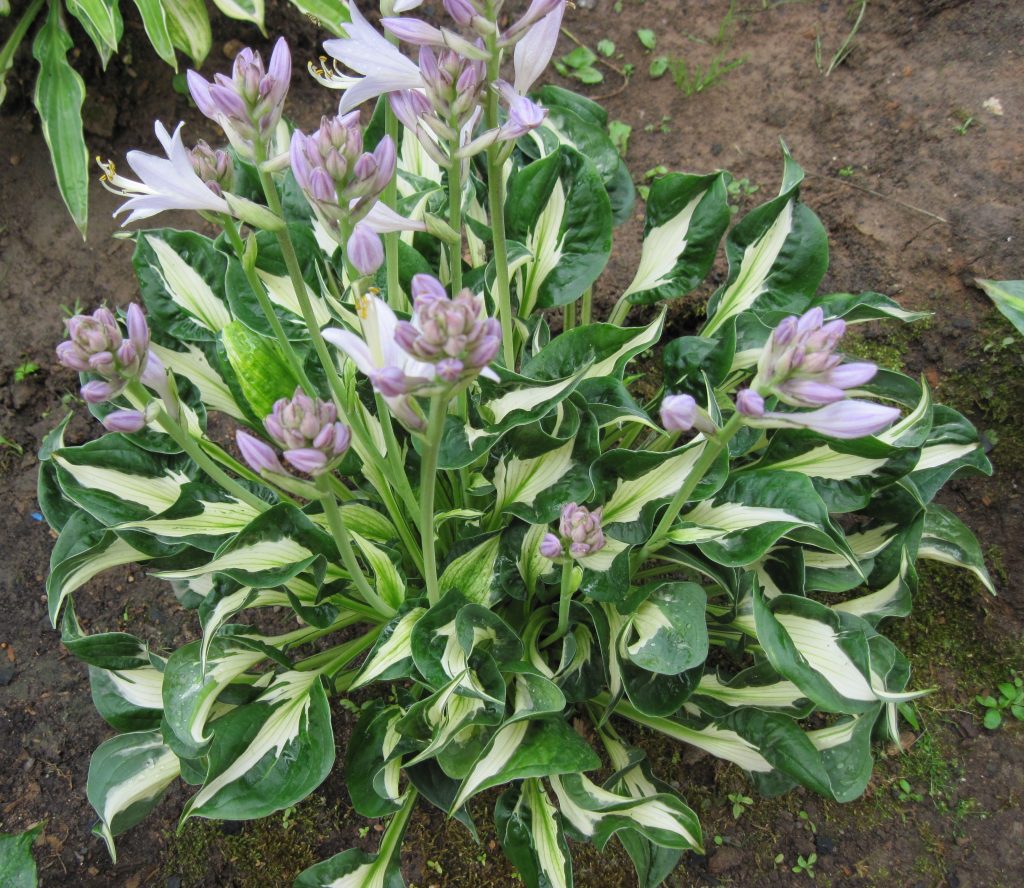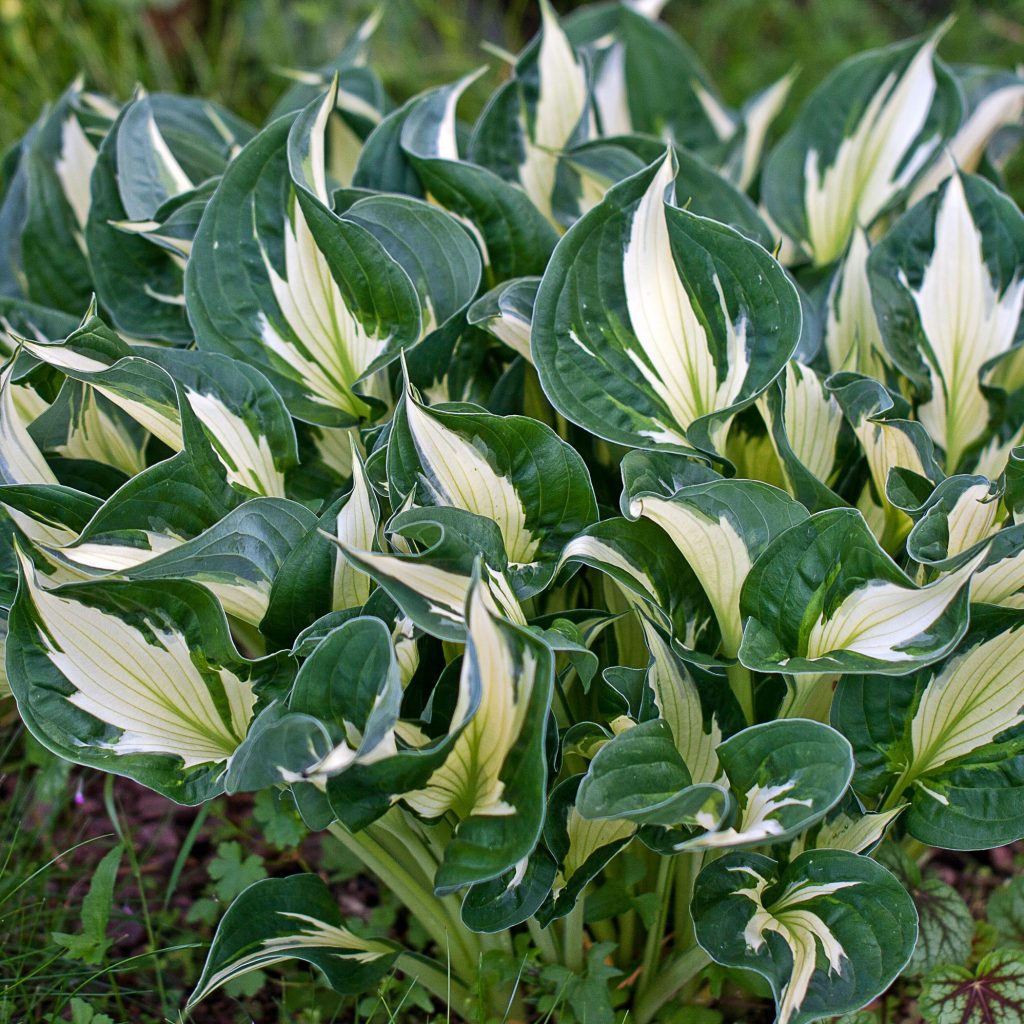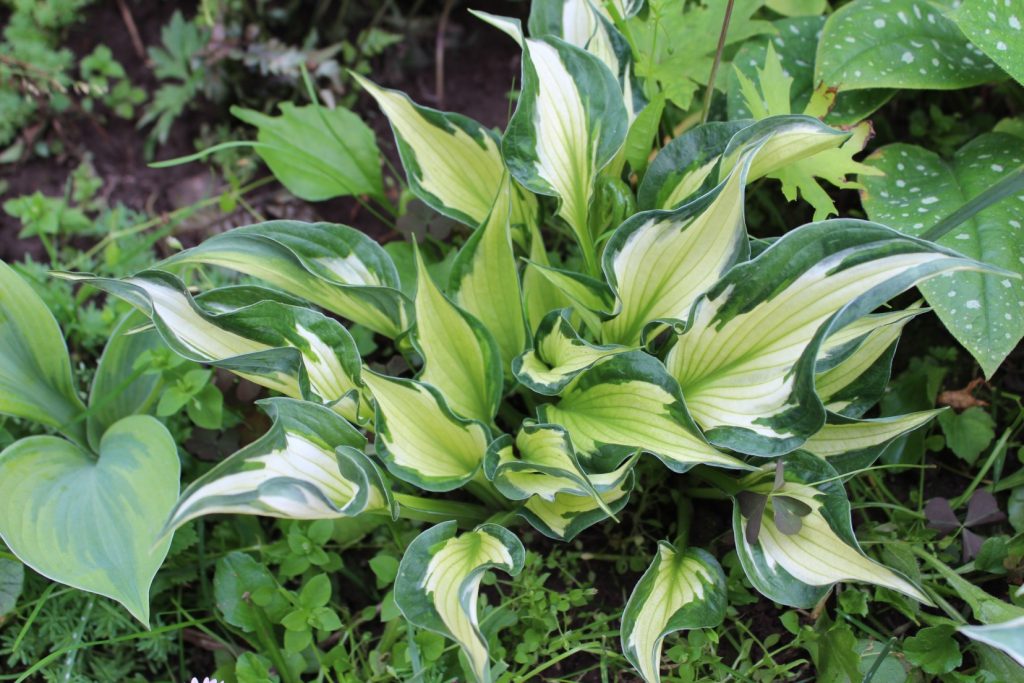Hosta Whirlwind - a tricolor variety
Hosta Whirlwind is an ornamental perennial from the Asparagus family. It is a sport of Fortune Hyacinth and has been known since 1989. The name of the variety in translation means "Whirlwind", which successfully emphasizes the original twisted shape and color of the leaves.

Whirlwind host description
Description of the plant
Whirlwind is a medium-sized function. The height of the bush reaches 40-50 cm, the width is 60-100 cm. The bush is dense, hemispherical, compact. The leaves are rather large (20x15 cm), directed upwards, beautifully curled, which makes the hosta "curly". The leaf is dense, cordate, slightly shiny.
At the beginning of the season, the center of the leaf plate is creamy milky in color with thin veins, and in the summer it is painted in chartreuse.
The wide border is dark green, as if applied by strokes. The flowers are small, bell-shaped, light lavender. Flowering begins in July and lasts until mid or late August.
Landing features
The whirlwind function can grow in the sun, in partial shade, or in the shade. However, it needs to be protected from the midday sun. It is better to plant the hosta in diffused sunlight or in light shade - the leaves will turn out to be brighter, more contrasting and curled. She is not too picky about the soil, but most fully manifests decorativeness on fertile soils.

Hosta whirlwind photo
Light loams with a neutral or slightly acidic reaction and additionally introduced organic matter are suitable for her. The shrub should not be planted in places where groundwater is close. If there is no alternative, you can build an embankment for the function and lay a thick layer of drainage during planting. The distance from the planting hole to other perennial plants should be at least 50 cm.
Since the roots of the funkia grow in width, the planting hole is made wider - 60-70 cm in diameter. The depth is 50-60 cm.
Technology:
- We put a drainage layer on the bottom (pebbles, gravel, broken brick).
- Mix the removed soil with compost and fill the hole by a third.
- We transfer the plant from the container together with the earthen lump (if the seedling is with an open root system, pour the soil mixture with a slide, on which we set the function and carefully straighten the roots).
- Water the host, fill it with the remaining substrate, tamp it.
- Mulch on top with peat chips.
Reproduction
Funkia Whirlwind is successfully propagated by cuttings or cuttings. Unfortunately, sowing seeds does not allow maintaining varietal characteristics. Cutting is recommended in April, but many gardeners use this method throughout the summer.

Host whirlwind photo
The shoot is cut off with a "heel" and treated with Kornevin, and then deepened into moist soil in a shady place. Cover with a plastic bottle on top for a greenhouse effect.
It is better to divide the bush at 5-6 years of planting, so as not to slow down the growth of the funky. Each part must have at least one kidney and an equal number of roots. Delenki are planted in partial shade and watered regularly.
Diseases and pests
| Problem | Symptoms | Prophylaxis | Wrestling |
| Slugs (as well as caterpillars and snails) | A trace of mucus in the form of a plaque, gnawed holes on the leaves. | Water the funky in the morning; Do not overmoisten; Do not let water get on the leaves; Sprinkle the soil with tobacco and pebbles. | Use traps (pieces of plywood, boards), collect pests by hand. Use special preparations based on methylaldehyde. |
| Rot | The leaves turn brown and rot at the tips, the stems soften. The bush stops growing and withers. | Quality drainage, proper watering, disinfection of garden tools. | Cut off the infected parts of the plant, treat with fungicides (Mikosan, Trichodermin, Topaz). Transfer the host to a new location. In severely neglected cases, the bush cannot be treated - it must be completely burned. |
Use in landscape design
With its “curly” and variegated leaves, Whirlwind creates a bright, original accent in the landscaping of a garden or site. It looks beautiful in mixborders and flower beds, as well as as a tapeworm on a green lawn.

Host hosta whirlwind
Hosta goes well with thujas, ferns, small fir trees and pines. It will be an excellent frame for flower beds and garden paths, decorate an alpine slide and a rocky garden. It can be grown in a container and decorate verandas, terraces, gazebos, small courtyards.
The function will fit perfectly into the flower garden next to the delphinium, lilies, roses, peonies, gladioli.
Variety reviews
According to the descriptions of gardeners, Whirlwind's function is unpretentious, frost-resistant and not prone to disease. Due to the very dense leaves, slugs harm it less than other varieties. The bush grows quickly enough and soon becomes lush, although it remains compact.
The leaves of this hosta are considered more decorative than flowers. However, many agree that graceful lavender bells on tall peduncles are in perfect harmony with swirling, twisted leaves. Some growers grow Whirlwind in pots, claiming that it looks even more impressive this way than on a flower bed or lawn.

